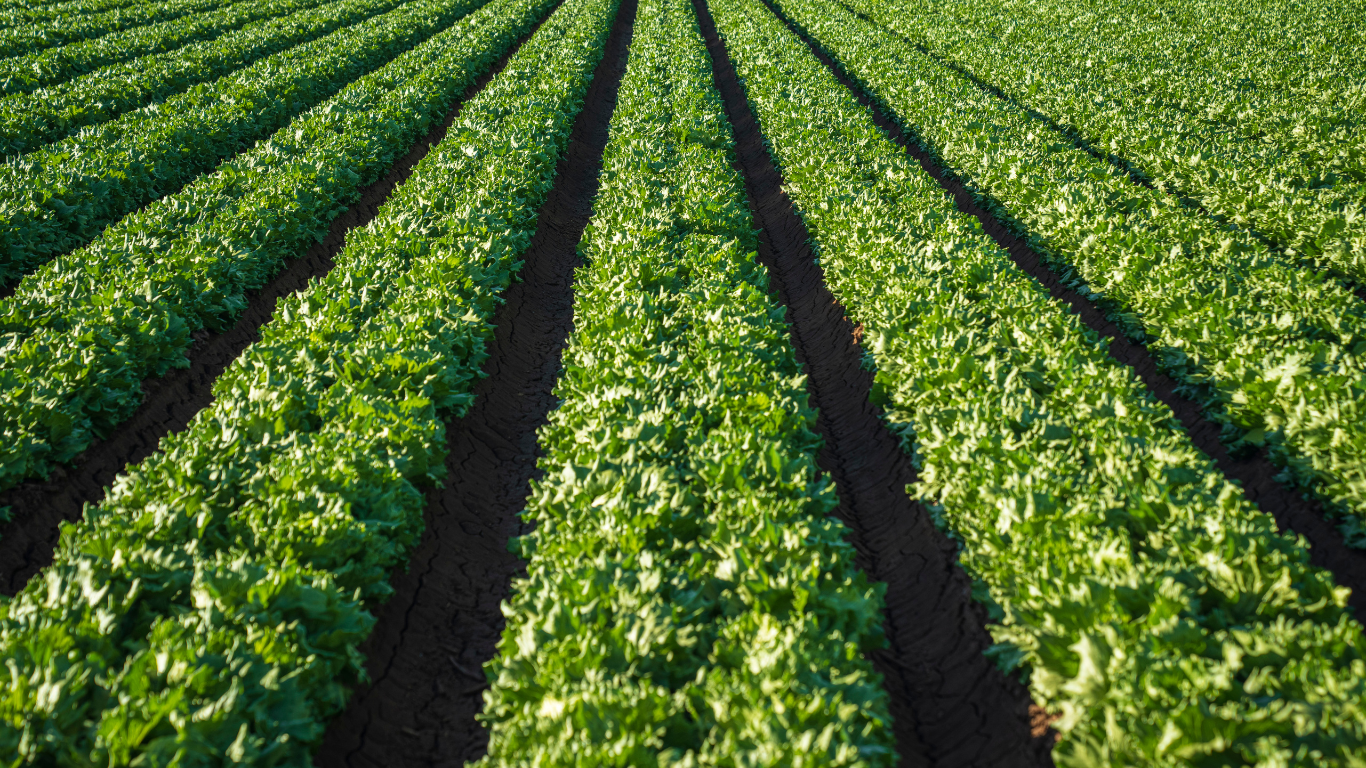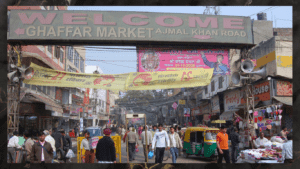Nepal is a land of rich cultural diversity, stunning landscapes, and a strong agricultural tradition. Agriculture remains the backbone of Nepal’s economy, with around 65% of the population involved in farming. From the terraced hillsides to the fertile valleys, Nepali Farms are an integral part of life in Nepal, supporting not only the local economy but also providing an opportunity for sustainable tourism, eco-living, and cultural exchange. In this article, we’ll explore the unique aspects of Nepali farming, including organic farming practices, the role of agro-tourism, and how traditional farming techniques blend with modern sustainable approaches.
Traditional Farming in Nepal: An Overview
Nepal’s farming tradition dates back centuries, with many rural communities still practicing subsistence farming. These farms typically grow rice, maize, wheat, millet, and barley, along with vegetables like potatoes, beans, and radishes. The crops are often planted on terraced hillsides, which minimize soil erosion and make the best use of available land in the mountainous regions.
Seasonal Crops and Animal Husbandry
Nepali farmers usually follow a seasonal cropping cycle dictated by the country’s diverse climate. The monsoon season (June to September) is critical for rice cultivation, especially in the Terai lowlands, where the fertile plains allow for intensive agriculture. Meanwhile, in the hill regions, maize and wheat dominate. Farmers also rear livestock such as cows, buffaloes, goats, and chickens, which contribute significantly to the household economy through milk, meat, and manure.
Many farms practice mixed farming—growing crops and raising livestock simultaneously. This method maximizes resource use and minimizes waste, a key aspect of sustainable agricultural practices.
The Rise of Organic Farming in Nepal
As global awareness of sustainable farming grows, many Nepali farmers are transitioning from conventional farming to organic agriculture. Organic farms avoid synthetic fertilizers and pesticides, opting instead for composting, crop rotation, and the use of organic pest control methods. This not only protects the environment but also ensures that the produce is healthier and free from harmful chemicals.
Prakriti Resort and Organic Farm: A Model for Sustainability
One of the leading examples of sustainable farming in Nepal is Prakriti Resort and Organic Farm. Nestled near Kathmandu, this 50-acre farm integrates traditional Nepali agricultural techniques with modern organic practices. The resort offers visitors a chance to experience rural life while learning about organic farming. Guests can participate in farm activities such as planting, harvesting, and composting, or simply enjoy the fresh produce from the farm. The resort’s mission is to promote eco-tourism while preserving the local culture and environment.
Agro-Tourism: A Growing Trend
Agro-tourism has become an increasingly popular way for visitors to engage with rural life in Nepal. This form of tourism allows travelers to stay on working farms, where they can learn about local agriculture, taste farm-fresh produce, and even participate in farm activities. Agro-tourism not only provides additional income for farmers but also helps to preserve traditional farming methods that are at risk of being lost.
Patlekhet Eco Farmhouse: Experiencing Rural Life
Located near Dhulikhel, the Patlekhet Eco Farmhouse offers a serene escape for visitors interested in experiencing Nepali farm life. The farm focuses on permaculture, a sustainable farming method that mimics natural ecosystems. Visitors can engage in permaculture workshops, hike through nearby trails, or simply enjoy the tranquility of rural Nepal. This farmstay is an excellent example of how tourism and farming can coexist harmoniously, promoting sustainability while providing an authentic Nepali experience.
Organic Farm Tours in Pokhara
For those visiting Pokhara, a tour of a local organic farm offers an opportunity to witness sustainable agriculture in action. Many of these farms use organic techniques to grow vegetables, fruits, and herbs. Visitors can explore the farm, learn about natural farming methods, and indulge in a traditional Nepali lunch made with fresh, organic produce grown on-site.
These tours provide an immersive educational experience, ideal for foodies and nature lovers who want to learn more about sustainable agriculture and enjoy the flavors of rural Nepal.
Challenges Facing Nepali Farmers
Despite the growing interest in organic farming and agro-tourism, Nepali farmers face numerous challenges. Small-scale farmers, in particular, struggle with limited access to modern technology, irrigation, and market opportunities. Additionally, climate change is altering traditional growing seasons, with erratic rainfall patterns and rising temperatures impacting crop yields.
Lack of Infrastructure and Market Access
In many rural areas, inadequate transportation infrastructure hampers farmers’ ability to bring their produce to market. Even in more accessible regions, farmers often face fluctuating market prices, making it difficult to achieve stable incomes. This has led many to focus on niche markets like organic farming or agro-tourism, which offer higher profit margins but require initial investments that not all farmers can afford.
Climate Change and Water Scarcity
As global temperatures rise, Nepal’s farmers are feeling the effects of climate change. The monsoon rains, crucial for rice and maize cultivation, are becoming less predictable, leading to both droughts and floods. Many farms also lack access to reliable irrigation systems, making them highly dependent on rainfall. Efforts are being made to introduce water-efficient farming techniques, such as drip irrigation and rainwater harvesting, but adoption has been slow.
Sustainable Solutions and Future Prospects
Despite these challenges, there are promising developments in Nepali agriculture. The government and various NGOs are working to provide farmers with better access to training, technology, and markets. Programs aimed at promoting organic farming and sustainable land use practices are also gaining traction.
Education and Training
Training programs, such as those offered by Prakriti Resort, teach farmers how to adopt organic practices and use resources more efficiently. These programs are vital for empowering farmers to improve their productivity and income while minimizing their environmental impact.
Embracing Technology
Technology is slowly making its way into Nepali farms, with innovations such as mobile apps that provide real-time weather updates and market prices. These tools help farmers make informed decisions about when to plant and sell their crops, reducing waste and maximizing profits.
The Future of Agro-Tourism
Agro-tourism is expected to continue growing as more travelers seek authentic experiences that connect them with nature and local cultures. Farms like Patlekhet Eco Farmhouse and Prakriti Resort will likely serve as models for future eco-tourism ventures in Nepal. These initiatives not only provide a valuable source of income for farmers but also help preserve Nepal’s rich agricultural heritage.
Conclusion: A Bright Future for Nepali Farming
Nepal’s farms are a vital part of the country’s economy and culture, offering a glimpse into traditional lifestyles while embracing modern sustainability practices. With the rise of organic farming and agro-tourism, Nepali farms are well-positioned to thrive in the 21st century. However, continued support from the government, NGOs, and the private sector will be crucial to ensure that farmers can overcome the challenges posed by climate change and market instability.
For travelers, visiting a Nepali farm is an enriching experience that goes beyond sightseeing—it’s a chance to connect with the land, the people, and the age-old traditions that define this beautiful country. Whether you’re participating in a farm tour in Pokhara or staying at an eco-friendly farmhouse near Kathmandu, you’ll gain a deeper appreciation for the hard work that goes into every grain of rice and every fresh vegetable grown on Nepal’s farms.
FAQs for Nepali Farm
1. What is a Nepali farm?
A Nepali farm typically refers to small-scale, family-run agricultural operations found in the rural areas of Nepal. These farms grow a variety of crops like rice, maize, wheat, and vegetables, and often involve livestock. Many farms are transitioning to organic farming practices.
2. What is organic farming in Nepal?
Organic farming in Nepal involves cultivating crops without synthetic fertilizers and pesticides. It focuses on sustainable practices like crop rotation, composting, and natural pest control to maintain soil fertility and ecosystem balance.
3. What is agro-tourism, and how is it related to Nepali farms?
Agro-tourism is a form of tourism where visitors stay on working farms to learn about local agriculture and rural life. In Nepal, this has become popular, with farms offering activities such as organic farming tours, permaculture workshops, and traditional Nepali meals.
4. Where can I experience agro-tourism in Nepal?
Several farms in Nepal offer agro-tourism experiences, such as Prakriti Resort and Organic Farm near Kathmandu and Patlekhet Eco Farmhouse near Dhulikhel. Visitors can enjoy farm activities, scenic hikes, and authentic Nepali hospitality.
5. What are the challenges faced by Nepali farmers?
Nepali farmers face challenges like unpredictable weather due to climate change, limited market access, and insufficient irrigation infrastructure. Despite this, many are adopting sustainable farming practices and using modern technology to improve productivity.
6. How can I visit a Nepali farm?
You can visit Nepali farms through guided tours, such as those offered in Pokhara, where you can explore organic farming methods and enjoy traditional Nepali meals. Many farms also offer accommodation as part of an agro-tourism experience.
7. What crops are commonly grown on Nepali farms?
Common crops grown on Nepali farms include rice, maize, wheat, millet, and vegetables like potatoes, radishes, and beans. The crops vary depending on the region and climate.
8. What role do livestock play in Nepali farming?
Livestock, such as cows, buffaloes, goats, and chickens, are integral to Nepali farming. They provide milk, meat, and manure, which are essential for household economies and sustainable farming practices.
9. How is climate change affecting agriculture in Nepal?
Climate change is altering growing seasons in Nepal, leading to erratic rainfall patterns that result in both droughts and floods. This poses a significant threat to farmers who rely on predictable weather for crop cultivation.
10. Are there any eco-friendly farming initiatives in Nepal?
Yes, many Nepali farms are adopting eco-friendly practices such as organic farming, permaculture, and water-efficient irrigation methods. Farms like Prakriti Resort and Patlekhet Eco Farmhouse are leaders in promoting sustainability and eco-tourism.




